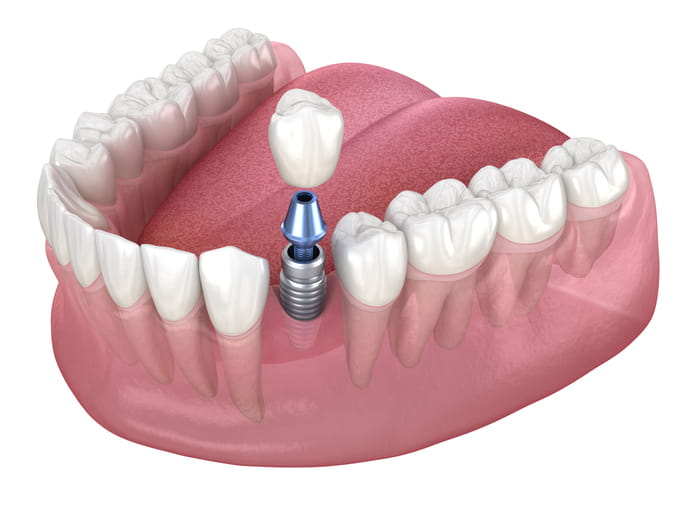Evaluation for Dental Implants
Before you qualify for dental implants, your dentist will conduct a complete dental exam and evaluation to see if an implant is the best choice for your needs.
To be a good candidate for a dental implant, you must:
- Be in good overall health
- Have a strong jawbone to support the implant
- Have healthy gums
- Not smoke or use tobacco products
- Be willing to commit to the dental implant process
If you don’t meet all the qualifications, your dentist may recommend other treatments to improve your oral health.
Dental Implant Procedure
The dental implant process involves multiple steps that happen over several months. While every patient experience is unique, here are the general steps of a dental implant procedure.
1. Initial Consultation
During your initial consultation and exam, your dentist will review your medical history and evaluate your oral health to see if a dental implant is possible. They may take X-rays or other scans to determine the health of your jawbone.
You can also ask questions to get a better understanding of the procedure and what is involved. If you cannot commit to the process, you’ll need to consider an alternative treatment.
2. Implant Surgery
If you’re approved for a dental implant, you’ll be scheduled for surgery. An oral surgeon will make a small incision in your gums and drill into the jawbone to make space for the implant. The titanium implant post or body is inserted into the bone to anchor the screw and abutment later in the process.
While you will likely only need local anesthesia for the surgery, you can ask your dentist about other sedation options. Our team will ensure you are comfortable and relaxed during the procedure.
3. Dental Implant Healing Process
After the post is placed, the gums are closed over the implant, and the healing process begins. Referred to as osseointegration, this is the time the implant fuses with the jawbone, which can take several months to complete. During the healing period, you may need to wear a temporary partial denture.
4. Implant Abutment Placement
When the implant is firmly connected to the jawbone, there is a solid foundation to place the abutment. Your dentist will reopen the gums and attach the abutment to the dental implant. Then, the gum tissue is closed around the abutment, which extends past the gumline. You will need about two weeks to heal before the next step.
5. Crown Placement
The last big step in the process is to place the false tooth or crown on top of the abutment. A standard fixed crown is permanently screwed or cemented onto the abutment.
6. Aftercare
Patients often experience some swelling, bruising, and minor discomfort at the surgical site. However, these symptoms will subside as your mouth heals. Your dentist may also prescribe pain medication and antibiotics to help with the healing process.
7. Possible Complications
As with any oral surgery, there are possible risks with dental implants, including:
- The bone fails to fuse to the dental implant
- Post-surgical infection
- Nerve damage
- Sinus damage
- Allergic reaction to the implant material
- Implant fracture





















